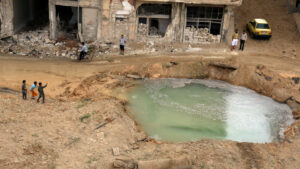After the latest assaults on the occupied West Bank, a look at how the Jenin refugee camp became a symbol of resistance.
At least 750,000 Palestinians were forced from their homes when the State of Israel was established in 1948. Some refugees settled in what is now known as the Jenin refugee camp, or just the Jenin camp, in the occupied West Bank.
This spot has historical importance for Palestinian nationalism. Nearby was the stronghold of the first organized Palestinian resistance against British rule, led by Izz al-Din al-Qassam (also spelled as Ezedin al-Qassam).
The original camp was destroyed by a violent snowstorm but rebuilt and formally established in 1953.
During the first Intifada between 1987 and 1993, Israeli soldiers regularly raided the Jenin camp in search of armed Palestinians.
More than 400 houses were destroyed, and hundreds were severely damaged. More than a quarter of the camp’s population was displaced.
Resistance fighters have been arming themselves to protect the camp and its residents.
But Israel says the Jenin camp is not a place of resistance but a hub for armed men bent on doing harm to Israelis.
In 2022, Al Jazeera journalist Shireen Abu Akleh was shot by an Israeli military sniper in Jenin while reporting on an Israeli raid.
In July 2023, Israel launched its largest assault on the occupied West Bank in decades. While Palestinians in the Jenin camp are unclear about their future, Israel seems to be more certain.
Art by Al Jazeera


